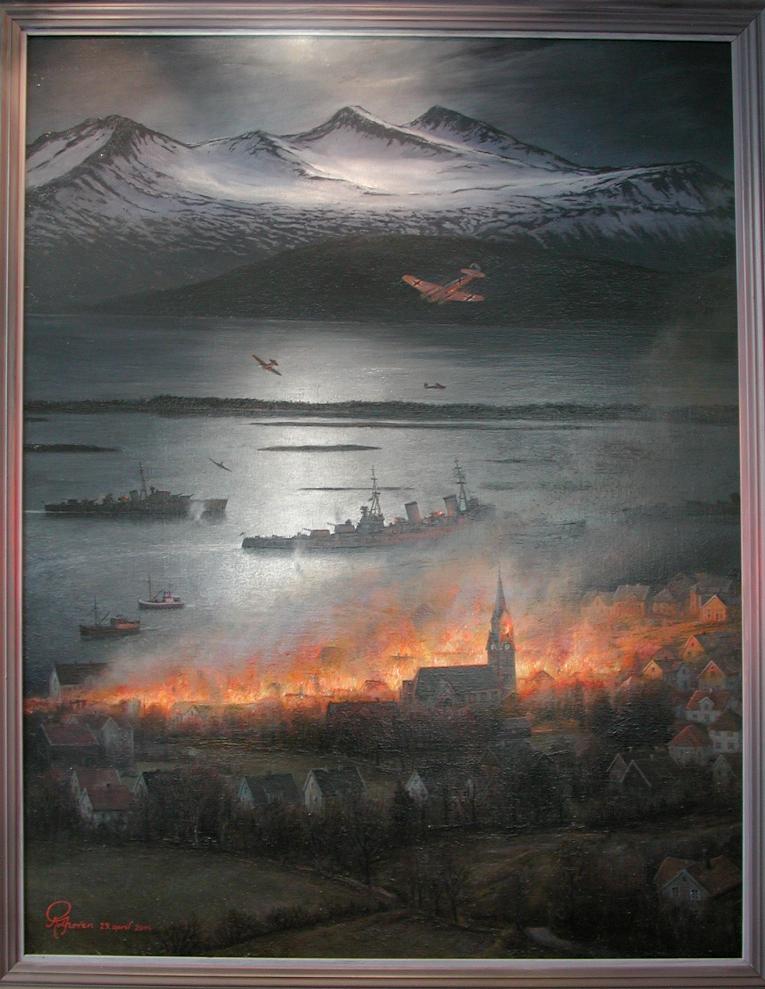

Painted by Rolf Groven
The following is displayed in the Sail Hotel, Molde, adjacent to the above painting:-
On the 9th of April 1940 Norway was attacked by the Nazis. Initially seven towns along the coast were occupied. The Germans did not however occupy any of the towns along the north-west coast. Molde thus became an important military centre. Norwegian and British battleships became a common sight on the fjord. This increasing military activity caused concern that Molde would become a goal for the German bombs. Only one week after the invasion, the first bombs fell. They were aimed at a ship alongside the main quay, but many missed their target and hit nearby houses.
The 29th of April 1940 was the worst day in the history of Molde. The town was transformed into a sea of flames. The beautiful church was still undamaged, but late that night a fire bomb got stuck high up in its tower. When the church caught fire all hope faded.
Unbelievable, only seven people were killed during these terrible April days.
One hour after midnight the three ships were at sea and heading north for Troms0.
In the midst of the drama, the crews on the motor boats "Rovdehorn" and "Legona" were working feverishly to get the gold reserves loaded onto the "Glasgow". They did not succeed in getting all the gold onboard before the ships had to leave the burning town. The rest of the gold was carried northward by fishing boats.